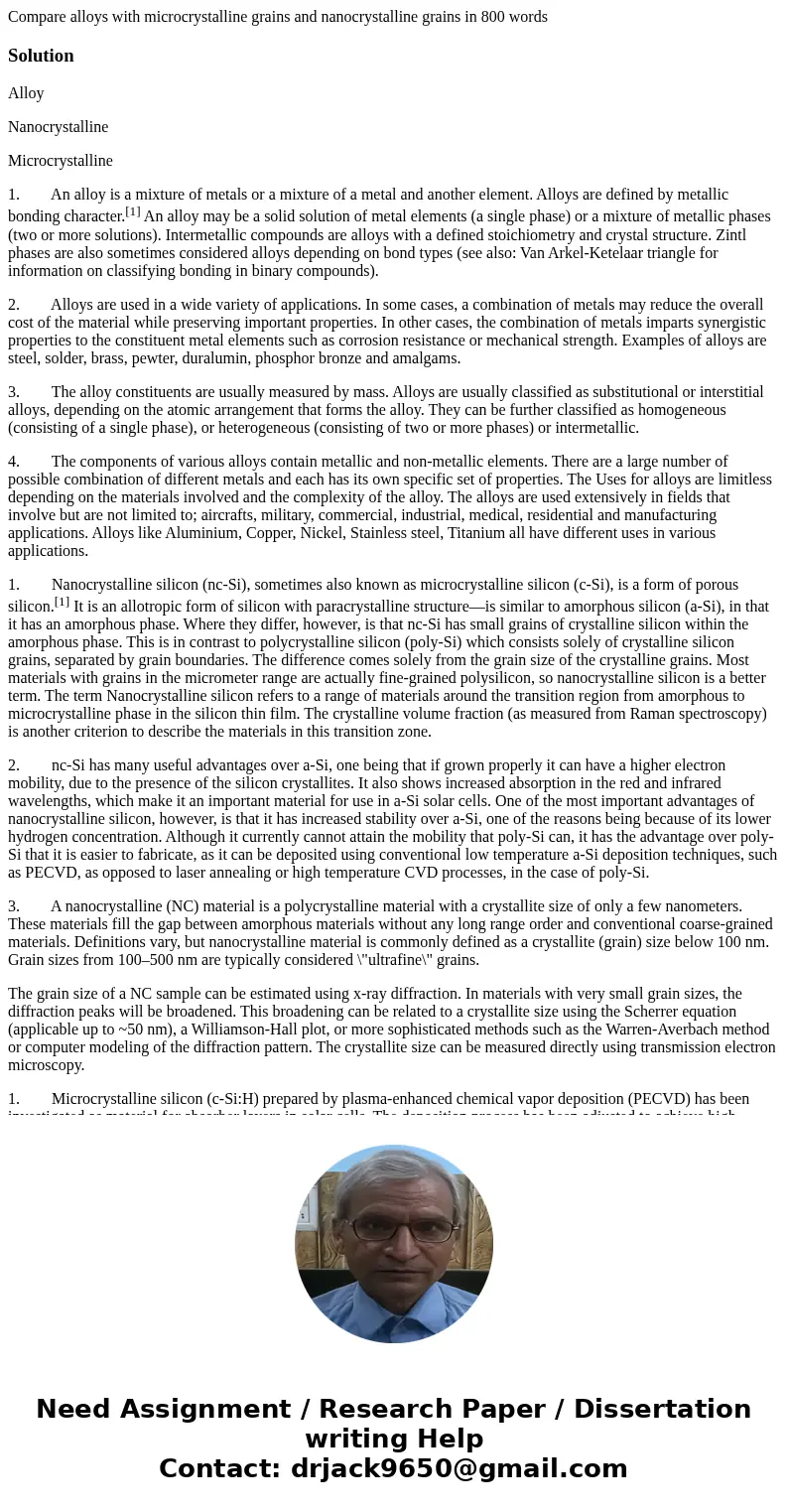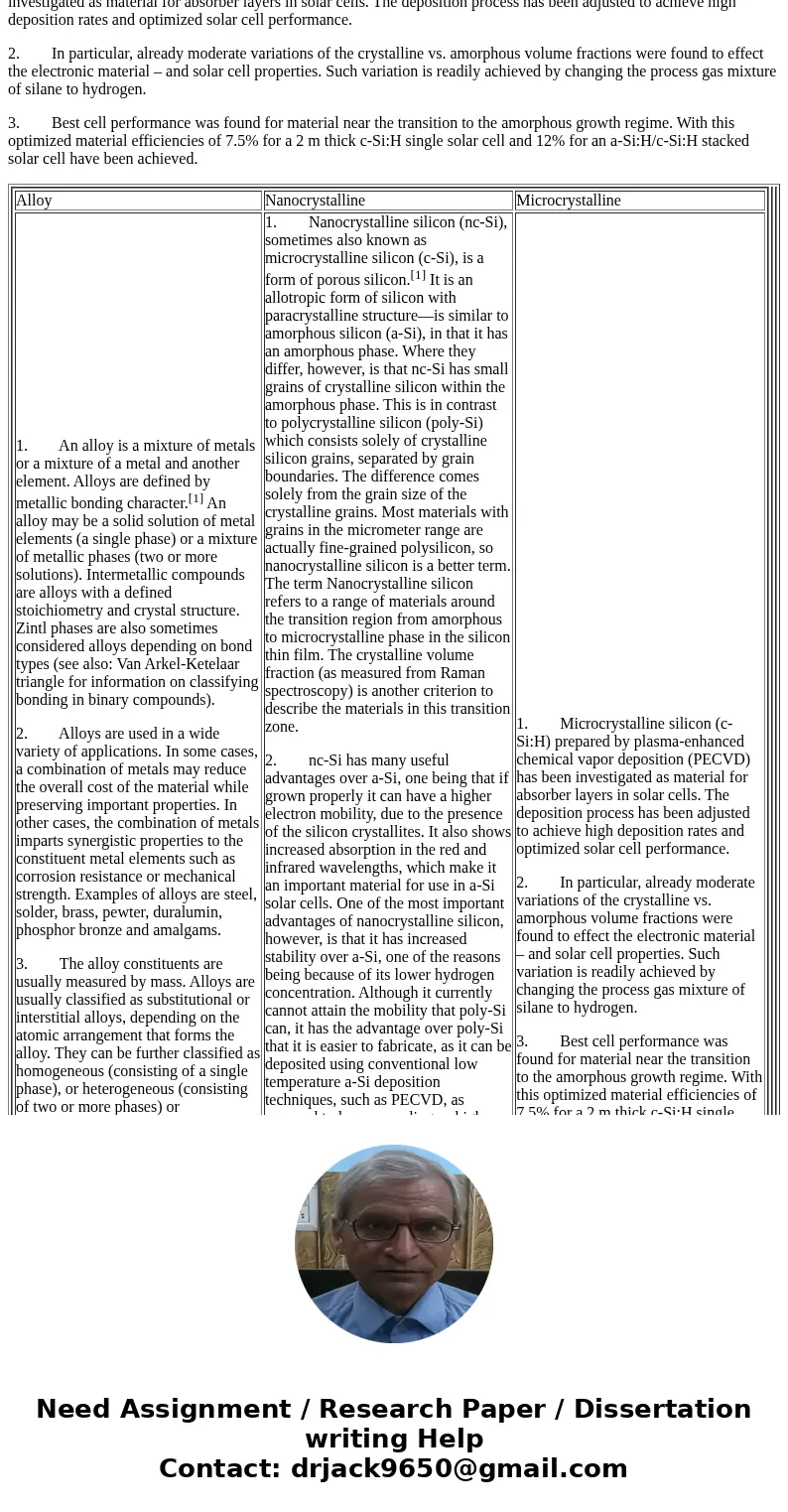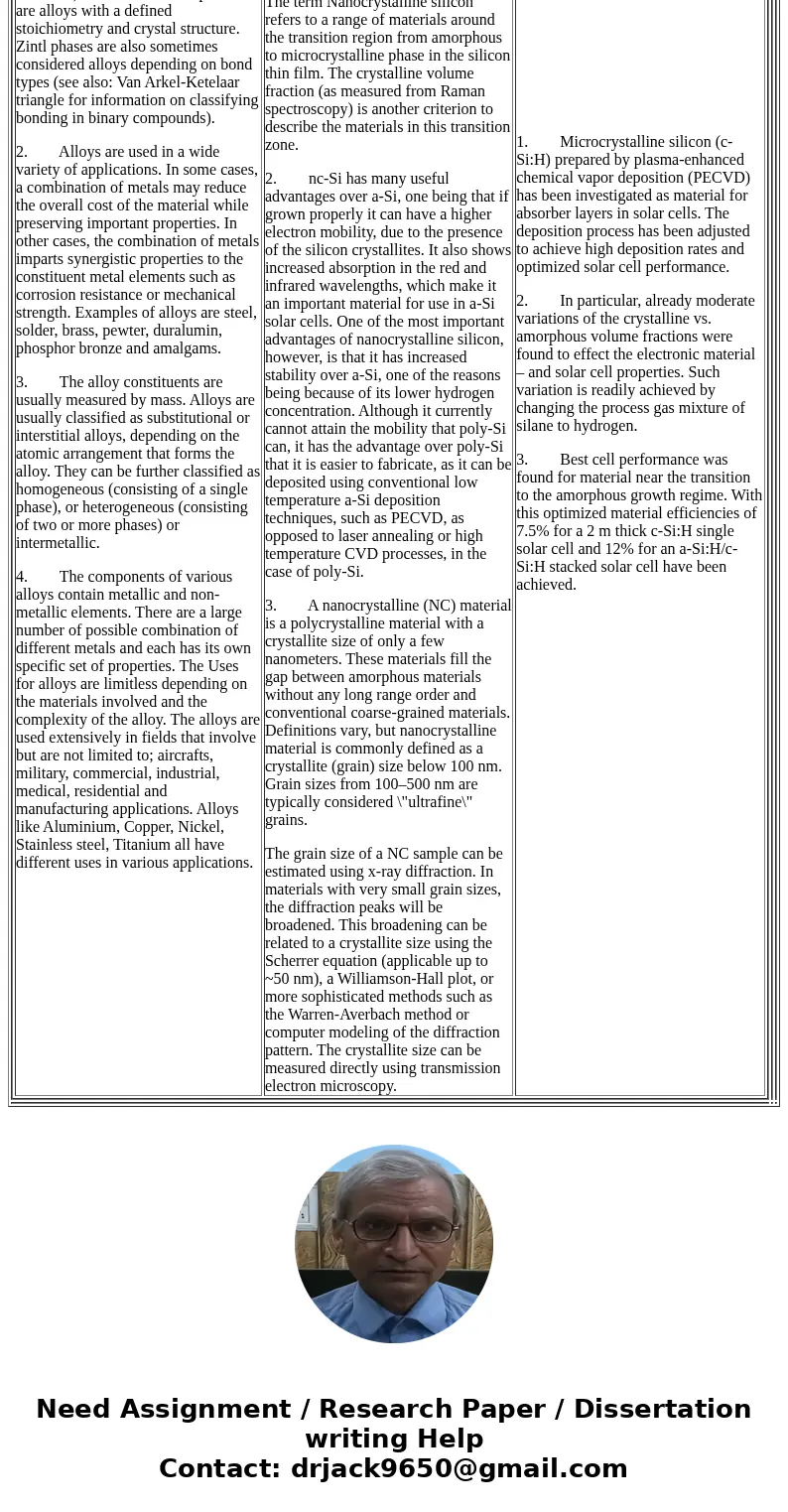Compare alloys with microcrystalline grains and nanocrystall
Compare alloys with microcrystalline grains and nanocrystalline grains in 800 words
Solution
Alloy
Nanocrystalline
Microcrystalline
1. An alloy is a mixture of metals or a mixture of a metal and another element. Alloys are defined by metallic bonding character.[1] An alloy may be a solid solution of metal elements (a single phase) or a mixture of metallic phases (two or more solutions). Intermetallic compounds are alloys with a defined stoichiometry and crystal structure. Zintl phases are also sometimes considered alloys depending on bond types (see also: Van Arkel-Ketelaar triangle for information on classifying bonding in binary compounds).
2. Alloys are used in a wide variety of applications. In some cases, a combination of metals may reduce the overall cost of the material while preserving important properties. In other cases, the combination of metals imparts synergistic properties to the constituent metal elements such as corrosion resistance or mechanical strength. Examples of alloys are steel, solder, brass, pewter, duralumin, phosphor bronze and amalgams.
3. The alloy constituents are usually measured by mass. Alloys are usually classified as substitutional or interstitial alloys, depending on the atomic arrangement that forms the alloy. They can be further classified as homogeneous (consisting of a single phase), or heterogeneous (consisting of two or more phases) or intermetallic.
4. The components of various alloys contain metallic and non-metallic elements. There are a large number of possible combination of different metals and each has its own specific set of properties. The Uses for alloys are limitless depending on the materials involved and the complexity of the alloy. The alloys are used extensively in fields that involve but are not limited to; aircrafts, military, commercial, industrial, medical, residential and manufacturing applications. Alloys like Aluminium, Copper, Nickel, Stainless steel, Titanium all have different uses in various applications.
1. Nanocrystalline silicon (nc-Si), sometimes also known as microcrystalline silicon (c-Si), is a form of porous silicon.[1] It is an allotropic form of silicon with paracrystalline structure—is similar to amorphous silicon (a-Si), in that it has an amorphous phase. Where they differ, however, is that nc-Si has small grains of crystalline silicon within the amorphous phase. This is in contrast to polycrystalline silicon (poly-Si) which consists solely of crystalline silicon grains, separated by grain boundaries. The difference comes solely from the grain size of the crystalline grains. Most materials with grains in the micrometer range are actually fine-grained polysilicon, so nanocrystalline silicon is a better term. The term Nanocrystalline silicon refers to a range of materials around the transition region from amorphous to microcrystalline phase in the silicon thin film. The crystalline volume fraction (as measured from Raman spectroscopy) is another criterion to describe the materials in this transition zone.
2. nc-Si has many useful advantages over a-Si, one being that if grown properly it can have a higher electron mobility, due to the presence of the silicon crystallites. It also shows increased absorption in the red and infrared wavelengths, which make it an important material for use in a-Si solar cells. One of the most important advantages of nanocrystalline silicon, however, is that it has increased stability over a-Si, one of the reasons being because of its lower hydrogen concentration. Although it currently cannot attain the mobility that poly-Si can, it has the advantage over poly-Si that it is easier to fabricate, as it can be deposited using conventional low temperature a-Si deposition techniques, such as PECVD, as opposed to laser annealing or high temperature CVD processes, in the case of poly-Si.
3. A nanocrystalline (NC) material is a polycrystalline material with a crystallite size of only a few nanometers. These materials fill the gap between amorphous materials without any long range order and conventional coarse-grained materials. Definitions vary, but nanocrystalline material is commonly defined as a crystallite (grain) size below 100 nm. Grain sizes from 100–500 nm are typically considered \"ultrafine\" grains.
The grain size of a NC sample can be estimated using x-ray diffraction. In materials with very small grain sizes, the diffraction peaks will be broadened. This broadening can be related to a crystallite size using the Scherrer equation (applicable up to ~50 nm), a Williamson-Hall plot, or more sophisticated methods such as the Warren-Averbach method or computer modeling of the diffraction pattern. The crystallite size can be measured directly using transmission electron microscopy.
1. Microcrystalline silicon (c-Si:H) prepared by plasma-enhanced chemical vapor deposition (PECVD) has been investigated as material for absorber layers in solar cells. The deposition process has been adjusted to achieve high deposition rates and optimized solar cell performance.
2. In particular, already moderate variations of the crystalline vs. amorphous volume fractions were found to effect the electronic material – and solar cell properties. Such variation is readily achieved by changing the process gas mixture of silane to hydrogen.
3. Best cell performance was found for material near the transition to the amorphous growth regime. With this optimized material efficiencies of 7.5% for a 2 m thick c-Si:H single solar cell and 12% for an a-Si:H/c-Si:H stacked solar cell have been achieved.
| ||||||||



 Homework Sourse
Homework Sourse